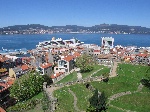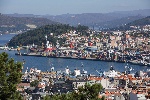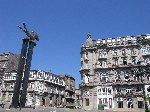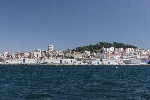Information
Factfile
-
Location: 42º 14’ North, 8º 45’ West
-
Area: 110km2
-
Population: almost 300,000 inhabitants
-
Population density: 2,755 inhabitants/ km2
-
Mean rainfall: 1.400 liters/m2 per annum
-
Mean temperature: 15ºC
The population of Vigo is almost 300,000 although the number of people who actually work, study and live in the city may reach half a million. This makes up 32% of the population of the Pontevedra province and 12% of the whole population of Galicia.
As well as being the most populated city in Galicia, historically it is also the city that has experienced the highest migration. Hundreds of thousands of emigrants left from Vigo port to sail to Latin America, while others remained to make this city their own, helping to build it.
Vigo is a relatively modern city. Its charter dates back to 1810 and it was really in the twentieth century when major urban development and population growth occurred - the population multiplied by twenty.
The city is situated in the middle of the "Ría de Vigo". Named after the city, this southernmost inlet of the Rías Baixas is undoubtedly the most beautiful of the "Rías". Stretching from the Cíes Islands to the island of San Simón, where it broadens after the bridge at Rande, the whole bay is dotted with picturesque little fishing villages, overlooked by the Olive City also known as "The Gate to the Atlantic". Its beaches are very atractive with fantastic nautical facilities to practice water sports and routes along the "Ría".
Vigo city limits cover an area of 110km2 over a very varied landscape. Its highest points are the hills of O Castro and A Guía, and from there it winds down to the charming old quarter. For the visitor there are excellent views of the bay from several vantage points. One unusual feature of Vigo is that it is a developed urban metropolis on the one hand, but also incorporates rural areas on the other.
Compared to the rest of Galicia, Vigo is fortunate to have a unique local climate which is usually sunny and warm in summer but not unbearably so.
Concello de Vigo
Praza do Rei - 36202 - Vigo (Pontevedra) - Teléfono: 010 - 986810100





